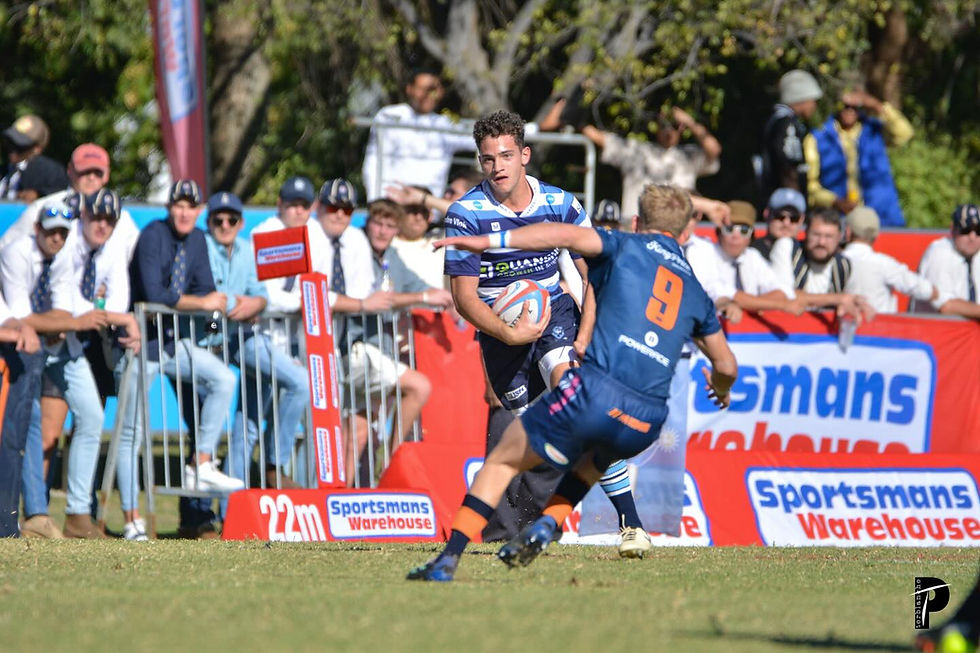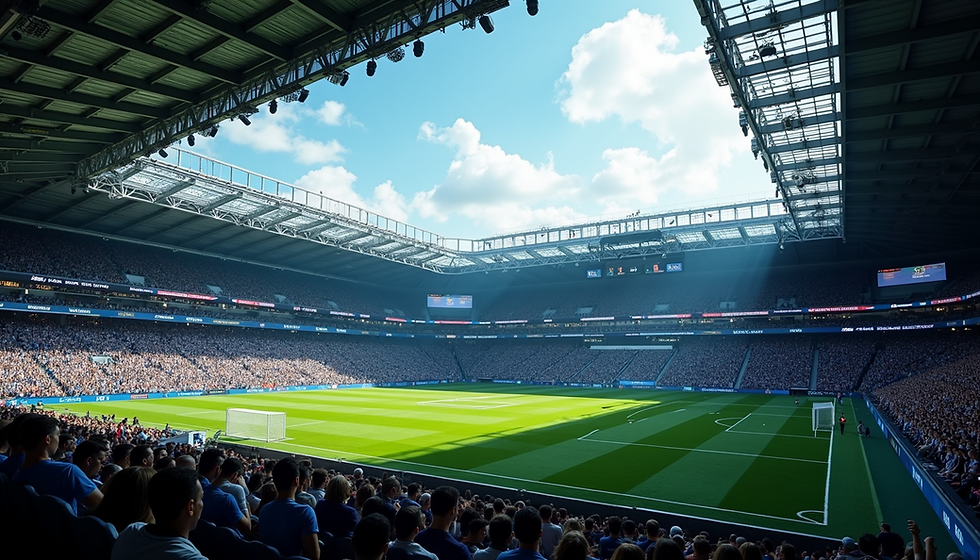Is It Time for NIL to Enter South African Schoolboy Rugby?
- Chester Khangelani Mbekela

- May 5
- 4 min read

Article by: Zila Mbekela, 5 May, 2025

South African schoolboy rugby is more than just a stage for young athletes to showcase their skills—it's a thriving, billion-rand ecosystem built on deep-rooted tradition, passionate rivalries, and commercial excellence. Across the country, school rugby commands packed stadiums, primetime television slots, streaming deals, merchandise sales, and lucrative sponsorships. In many respects, it's one of the most valuable and visible amateur sports platforms globally.
With all the money and attention flowing into the system, a question arises: Is it time for a Name, Image, and Likeness (NIL) framework, similar to that adopted in the United States, to be implemented in South African schoolboy rugby?
The Current State of Schoolboy Rugby
From Grey College to Paul Roos, Affies, Queen's College, Dale, Selborne to Pretoria Boys' High and more, the premier schoolboy rugby institutions have become professional environments in all but official status. Many of these schools have invested heavily in high-performance programs: cutting-edge GPS tracking systems, professional medical support, conditioning coaches, and access to elite competitions both locally and internationally.
Some of the top coaches in school rugby are reportedly earning well over R1 million per year, a testament to how seriously these programs are run. Furthermore, televised matches on SuperSport and live streams generate substantial audiences and advertising revenue. The atmosphere of these games often rivals that of professional matches, complete with commentary, halftime analysis, and branded activations.
Despite all this, the players—the main attraction—do not directly benefit. They’re still regarded as amateurs. This is not a call to pay them salaries, which could be disruptive and unethical for minors still focused on their education. Rather, it is an appeal for a regulated, thoughtful NIL system that allows the most marketable and elite schoolboy players to leverage their own brands—just like their American counterparts.
Understanding NIL: A Global Trend
In the United States, NIL rights have revolutionized high school and college sports. Athletes can now earn money through endorsements, social media influence, merchandise sales, public appearances, and brand partnerships—all without forfeiting their amateur status or scholarships.
What NIL does is empower the athlete without turning them into a salaried professional. It allows them to monetize the unique value of their personal brand. In an era of influencer marketing and digital content, many schoolboy athletes are already attracting followings on TikTok, Instagram, and YouTube.
Why shouldn’t a Grade 12 fly-half with 20,000 Instagram followers and multiple appearances on SuperSport be allowed to sign an endorsement deal with a local sports drink or apparel brand?
The Potential Benefits of NIL in South Africa
Introducing NIL into South African schoolboy rugby could offer several critical advantages:
Financial Support for Families: Many elite players come from modest backgrounds and are on full or partial scholarships. NIL deals could allow them to contribute to tuition, household costs, and university savings.
Future-Proofing Athletes: Not every prodigy makes it to the pros. NIL gives athletes the opportunity to build a personal brand and diversify their income, potentially launching careers in content creation, coaching, or entrepreneurship.
Boost to Local Brands and Agencies: By connecting with rising rugby stars, South African brands can grow authentically, and sports marketing agencies can cultivate a new niche—representing student-athletes ethically and responsibly.
Education and Responsibility: If implemented correctly, NIL can also teach young athletes and their families financial literacy, brand management, and contract negotiation—skills that are invaluable long beyond the rugby field.
Challenges to Address
Of course, there are concerns to address with an NIL framework:
Eligibility and Regulation: How do we prevent exploitation of minors and ensure that school policies and sports ethics are not compromised?
Equity and Access: Will NIL opportunities only benefit players from well-known schools, or will systems be created to give exposure to talent from lesser-known institutions?
Focus on Education: Schools must ensure that the academic mission remains intact. NIL deals should complement, not compete with, school and rugby commitments.
These challenges aren’t insurmountable. In fact, they’ve been actively addressed in the U.S., where NIL is governed by guidelines from state athletic associations and educational institutions. South Africa could adopt similar principles, adapting them to local realities.
Practical Implementation Ideas
To make NIL work for South African schoolboy rugby, here are some practical first steps:
NIL Education Workshops: Schools can host sessions for first-team players and their parents explaining how NIL works, what is allowed, and what to avoid.
Agency Collaboration: Ethical sports marketing agencies can guide players through brand building, social media strategy, and contract management.
Social Media Training: Help athletes understand how to grow their online presence authentically and professionally.
School-Approved Brand Collaborations: Allow schools to vet brand partnerships to avoid conflicts of interest or harmful associations.
Transparency and Compliance: NIL income can be tracked and reported, ensuring that students remain compliant with school and sports governance standards.
The Bigger Picture
At its heart, schoolboy rugby remains about tradition, community, and passion. But it’s naive to ignore the commercial juggernaut it has become. With millions of rand circulating through sponsorships, media rights, and fan engagement, it’s only fair to explore ways in which the players—the ones running the ball, making the tackles, and thrilling the crowds—can ethically and responsibly benefit.
Implementing an NIL framework is not about compromising amateurism. It’s about modernizing it for a digital, connected, and brand-driven era.
As the landscape of South African sports continues to evolve, perhaps it’s time we gave our most promising schoolboy rugby players not just a platform to perform—but also the tools to profit from the talent they bring to it.
Conclusion
Schoolboy rugby in South Africa is no longer just a proving ground for future Springboks. It’s a commercial ecosystem that’s producing stars before they even leave high school.
With a thoughtful, education-first approach, NIL could be the bridge between tradition and transformation—allowing our next generation of rugby icons to get a small but deserved share of the value they help generate.
It’s time to have the conversation. The future of the game—and the future of its players—may depend on it.
*Zila Mbekela is a licensed football and rugby agent - accredited by FIFA and JRFU









Comments